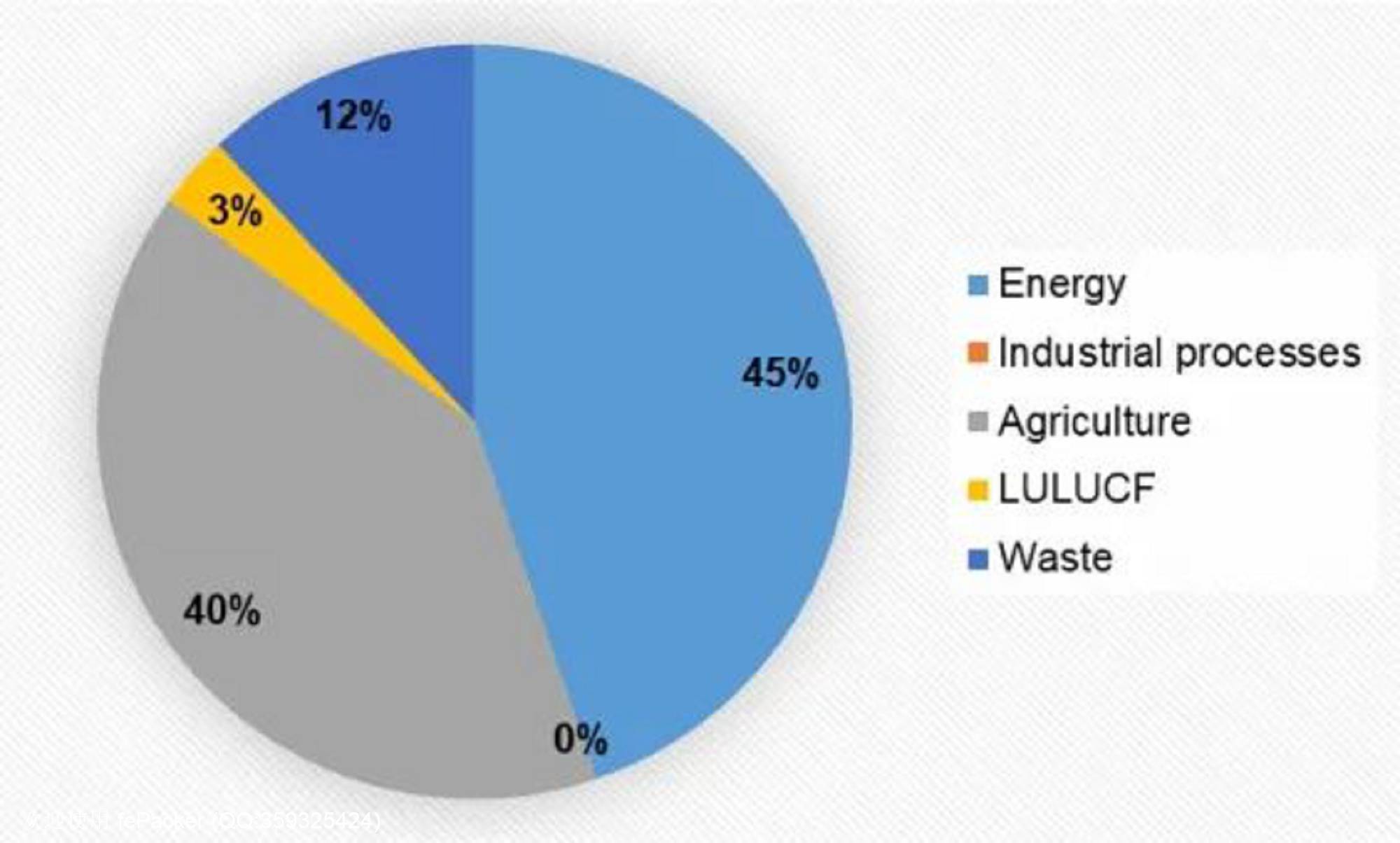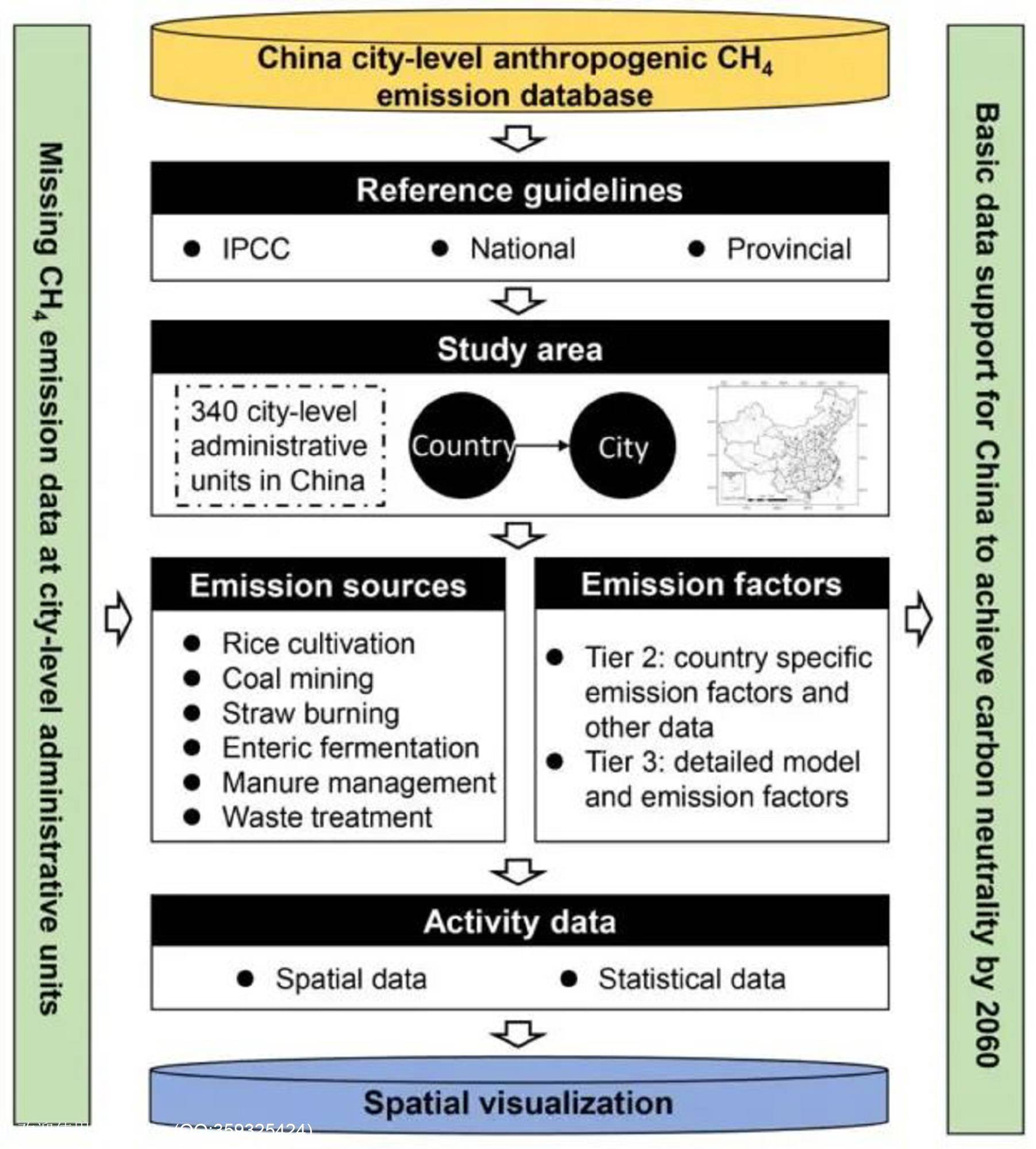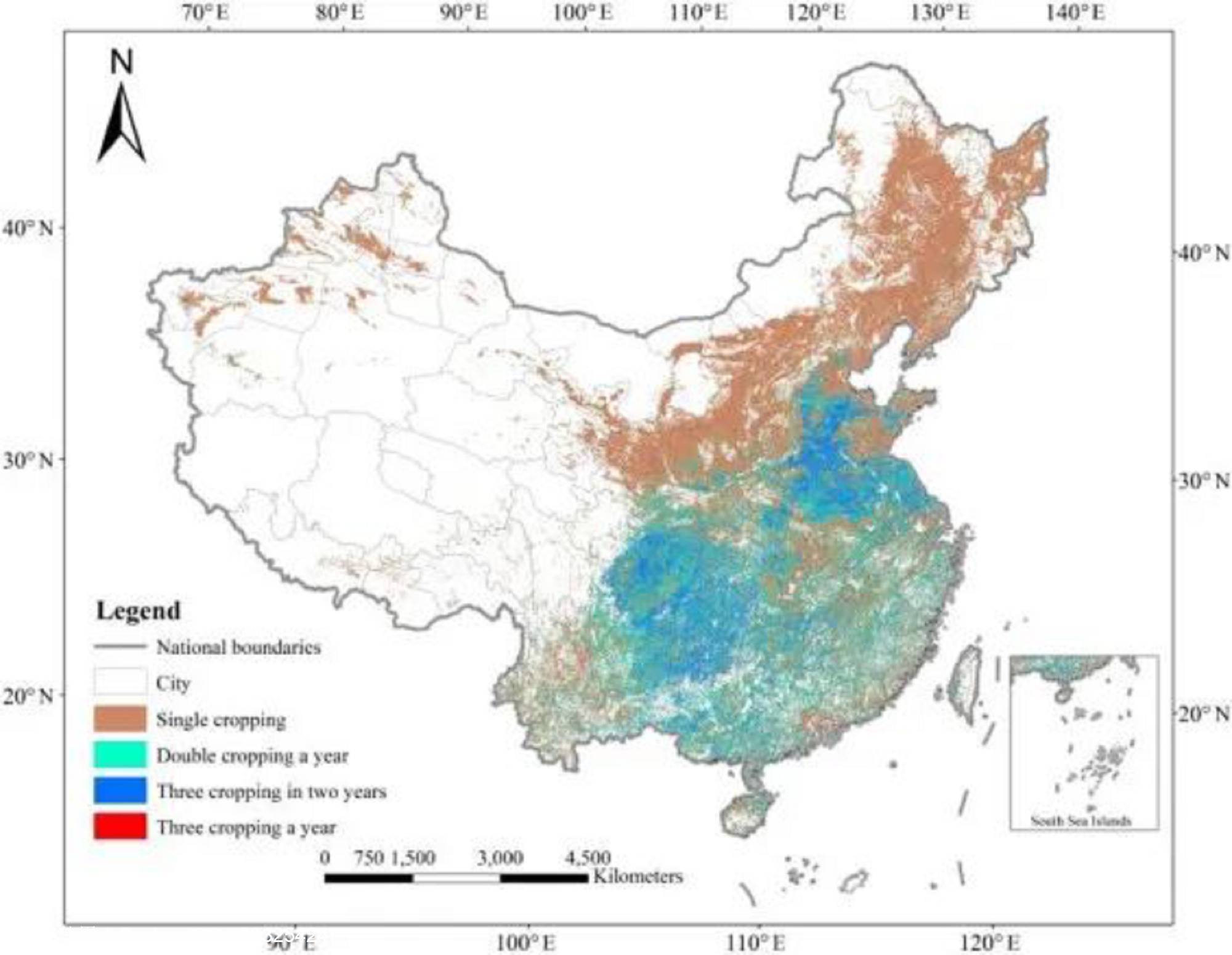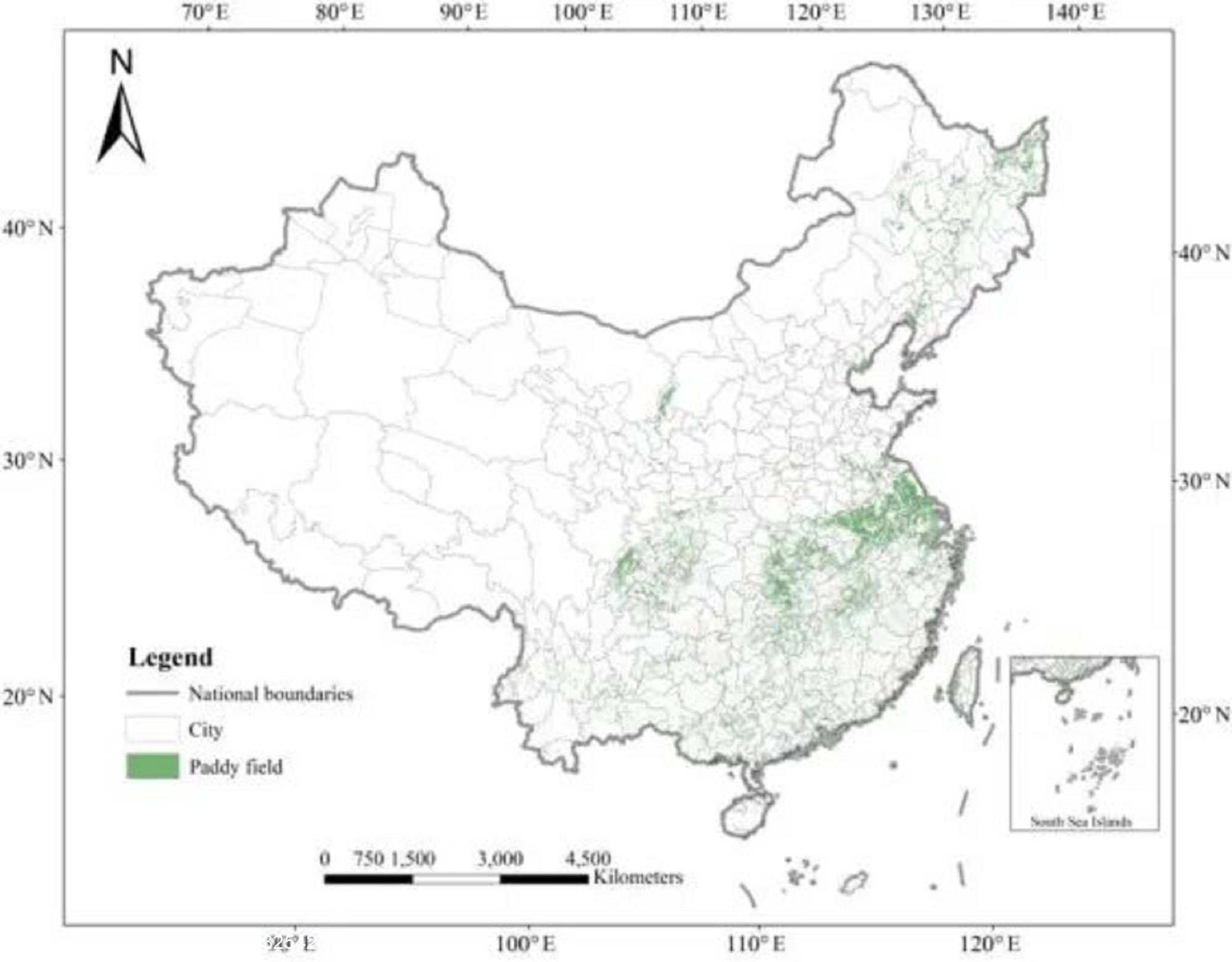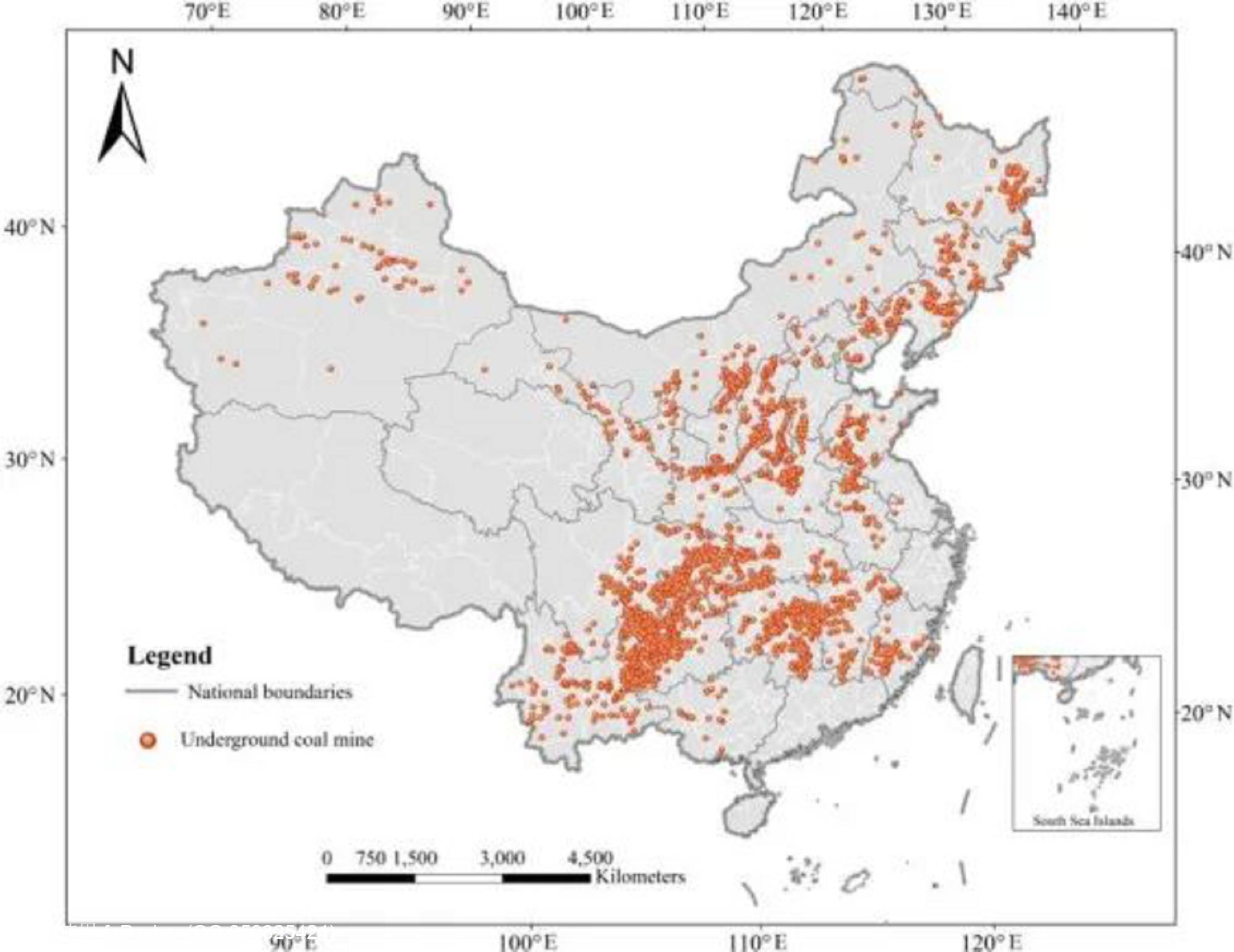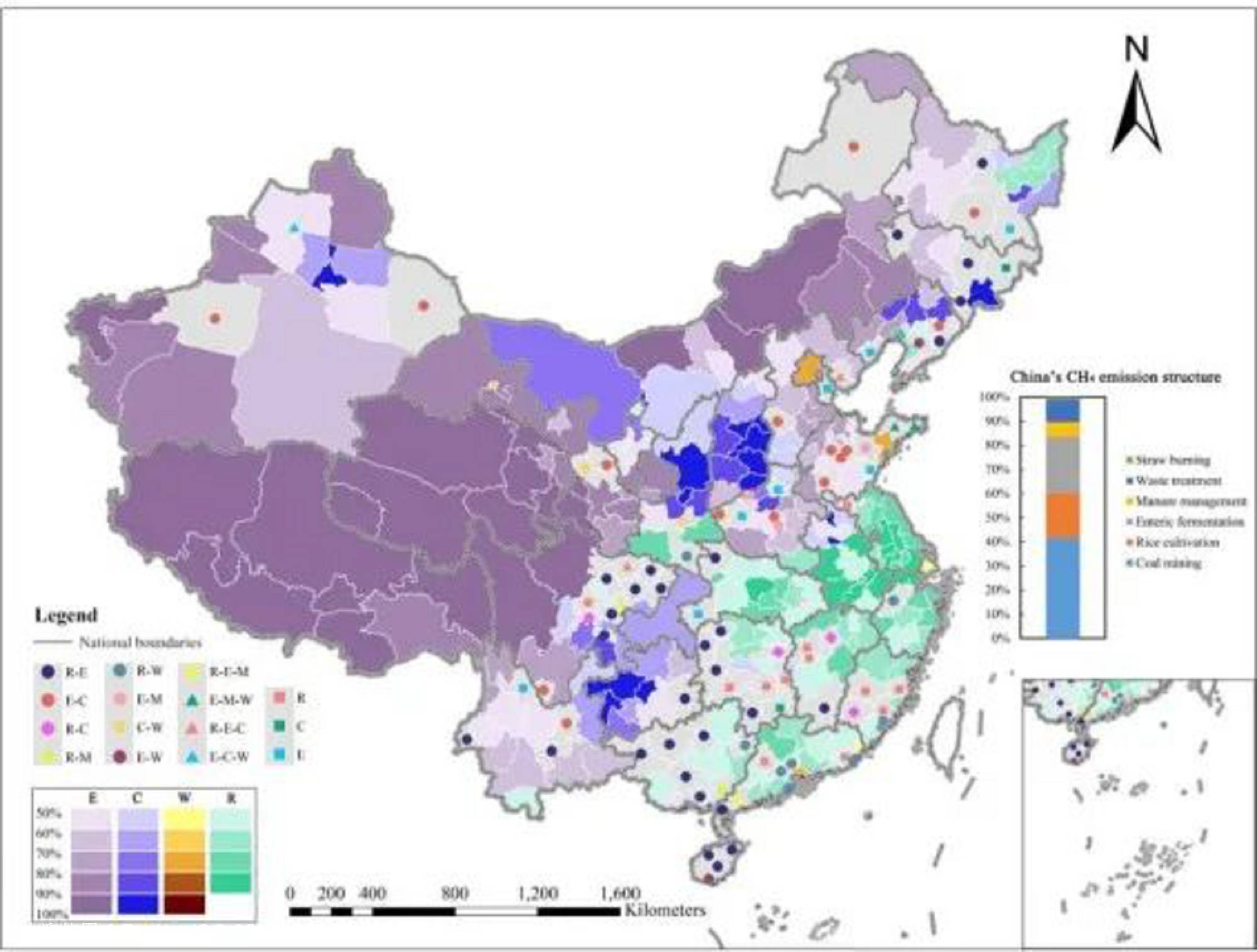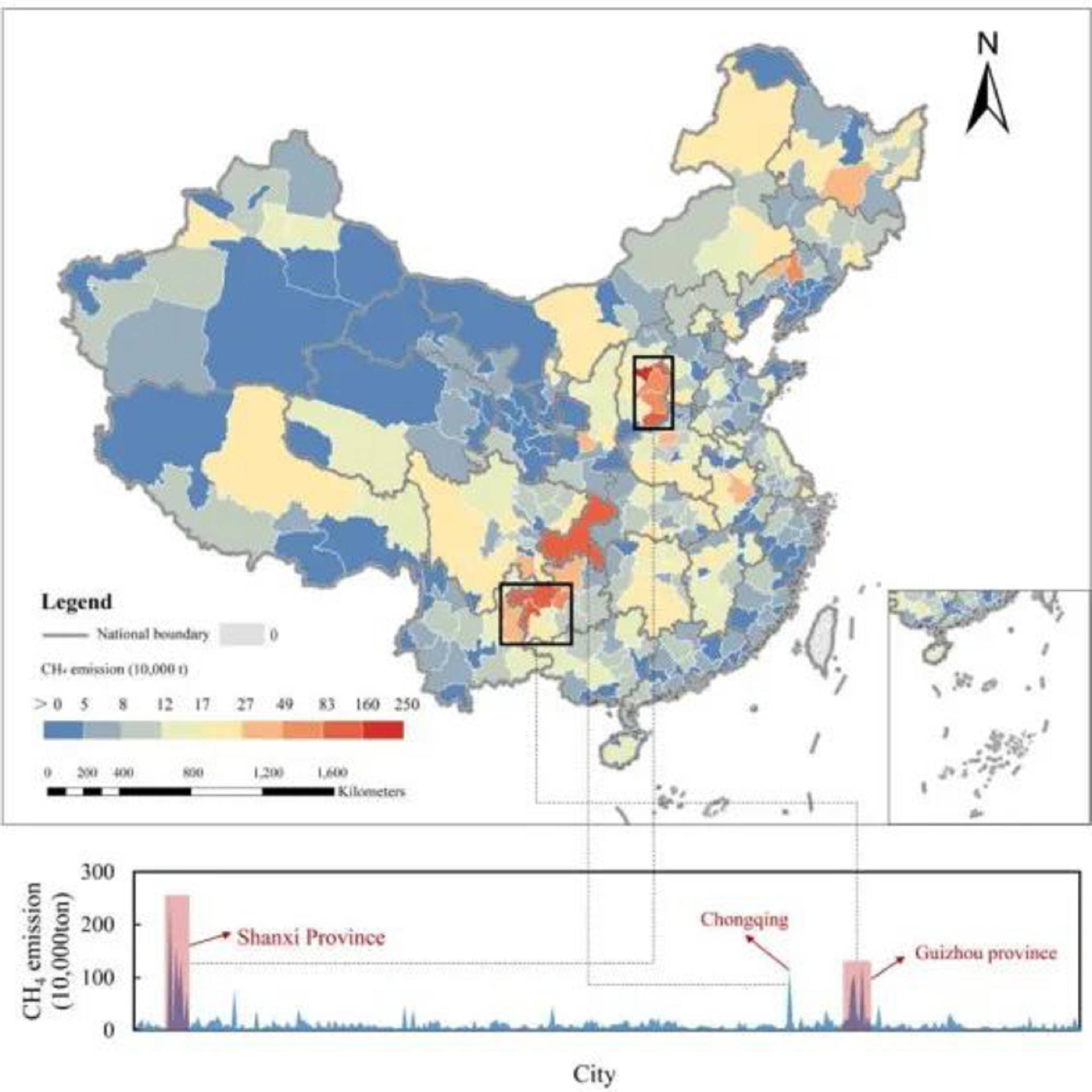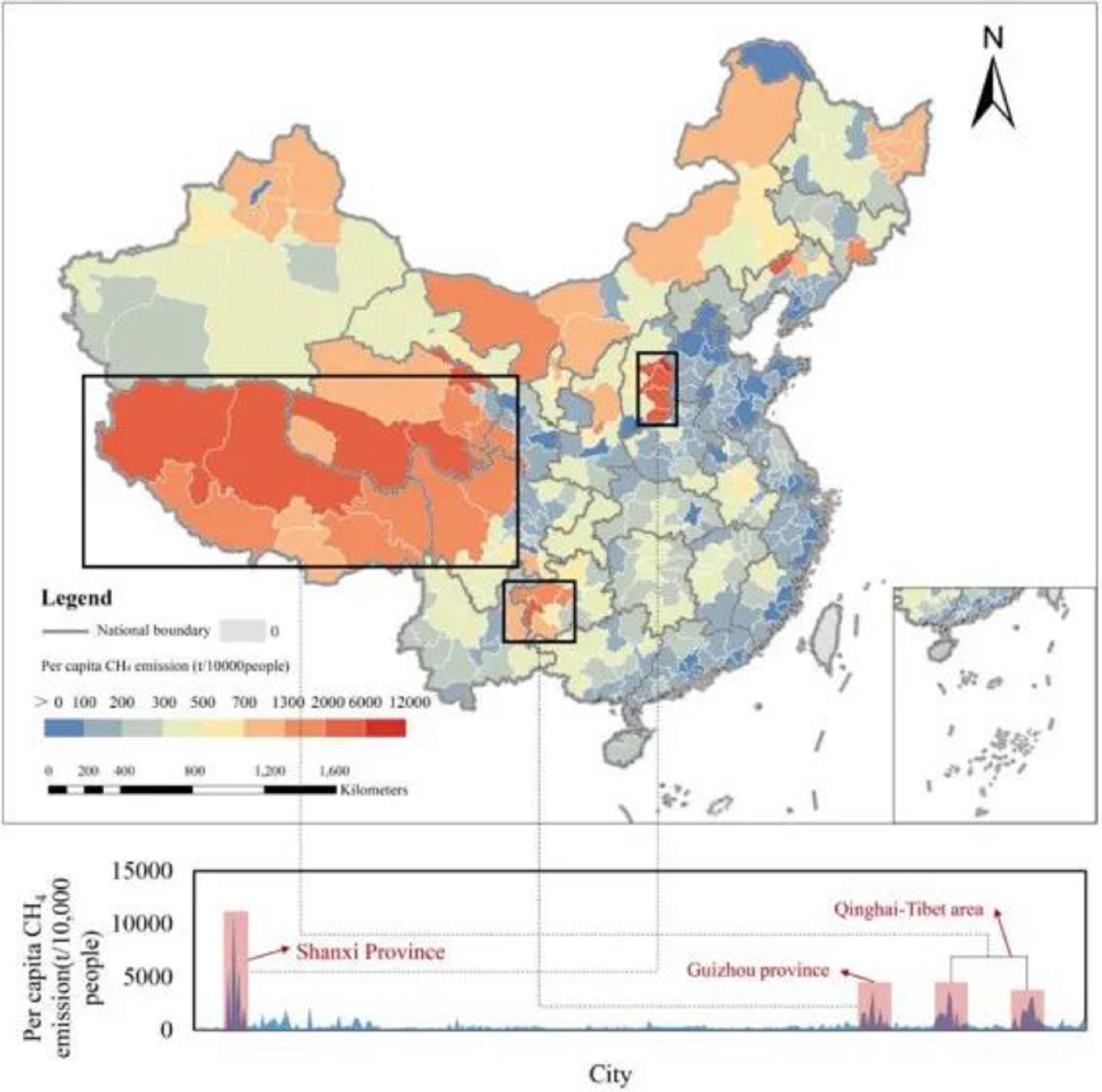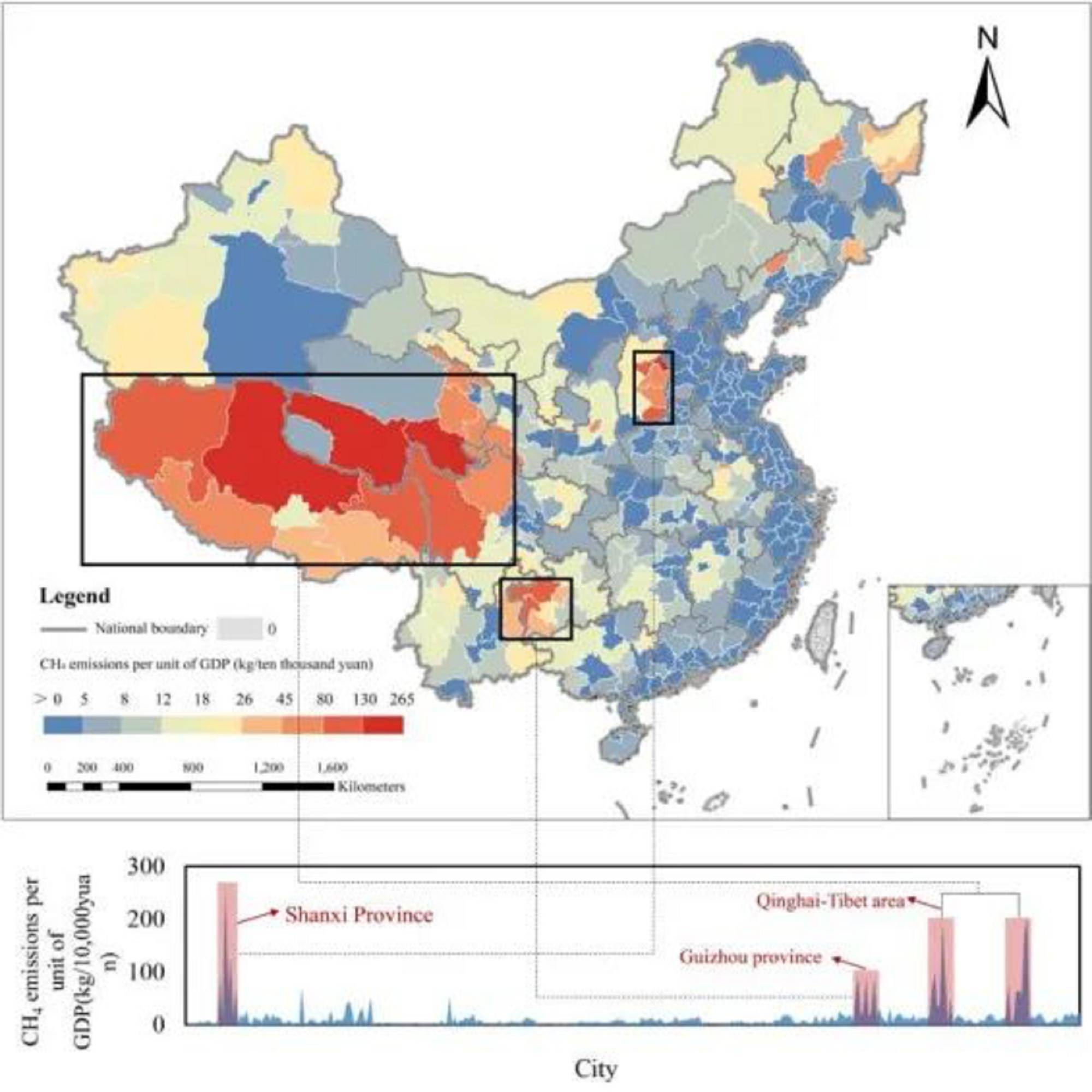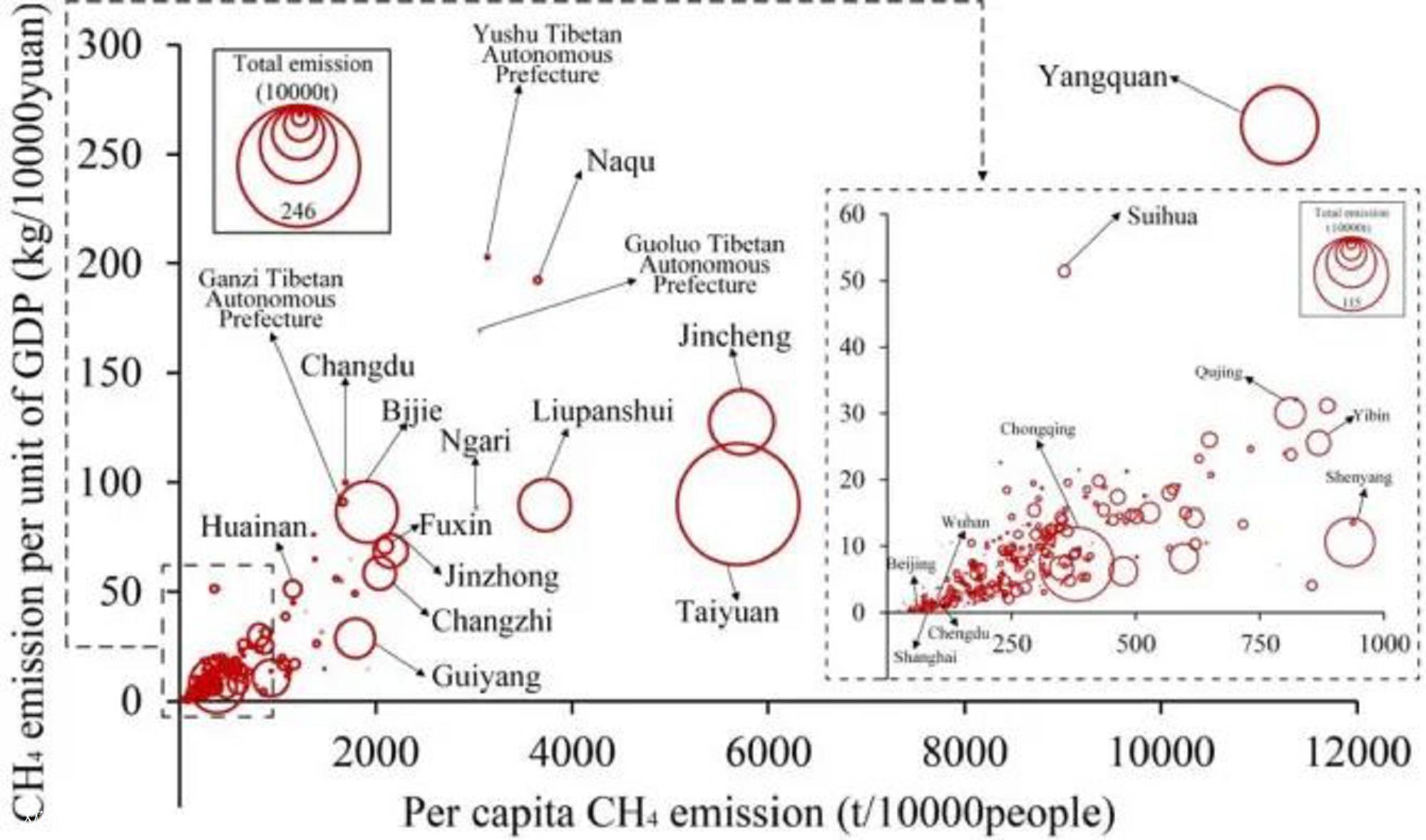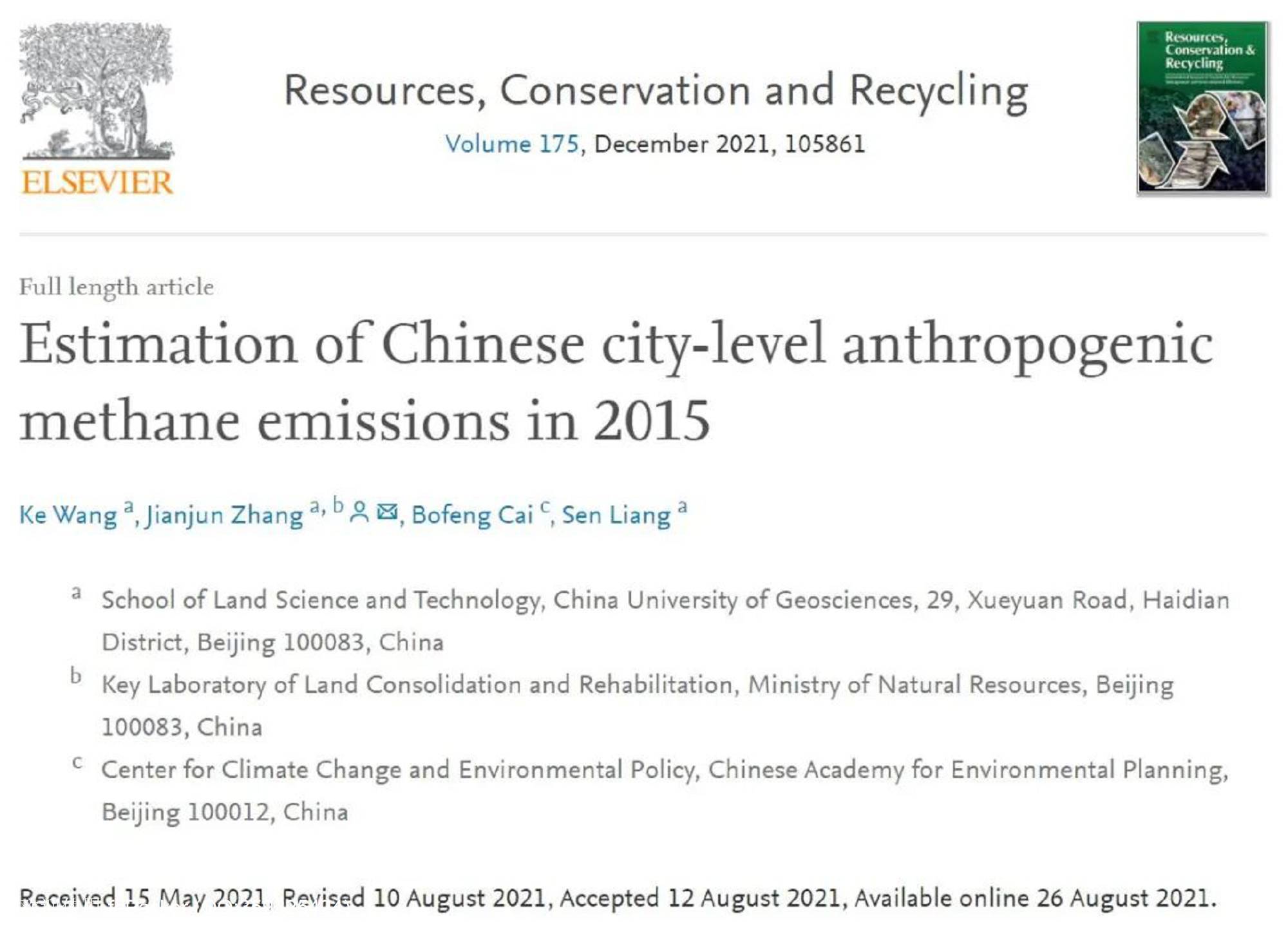| 发布时间:2021-09-15 11:34:25 | 来源: RCR期刊 | 作者:本站编辑 | 浏览次数: |
甲烷是全球变暖的第二大贡献来源,全球16%的温室气体排放是由甲烷排放产生的。2019年,IPCC更新了2006年国家温室气体清单指南,其中,甲烷排放因子、水稻种植计算公式、牲畜粪便管理排放决策树等甲烷排放因子和核算方法得到更新,从而间接反映了许多学者和组织对人为甲烷排放的高度关注。随着经济的快速发展,中国已成为最大的甲烷排放国,占全球总排放量的14%-22%。中国政府为应对全球温室气体,承诺在2030年碳排放达到峰值,并在2060年实现碳中和。考虑到甲烷在总体温室气体排放中的重要性,在过去的30年中,学者们已经意识到对甲烷排放清单进行定性评估的重要性,并且在世界各地进行了许多关于甲烷排放的研究,但研究的规模一般集中在国家级、区域和省级,缺乏对于构建城市级别甲烷排放数据库的研究。为填补这一研究空白,本研究结合多元数据信息收集,提供了2015年中国340个地级行政单位甲烷人为排放数据库。 1)推进了中国城市级别排放基础数据库的建立 2)计算了2015年中国340个城市甲烷的人为排放量 3)进行了中国甲烷人为排放的特征分析 4)为中国到2060年实现碳中和提供建议 中国一直以来高度重视甲烷的排放并计划在“十四五”期间制定甲烷减排的相关措施。对于发展中国家,城市是未来应对气候变化的重点区域,因此在城市层面核算和了解甲烷排放非常重要。然而,现有研究尚未提供最新完整的中国城市级甲烷排放数据库。为了推动甲烷排放核算的相关研究,本研究基于多种数据源的统计信息,采用生产法计算了中国340个地级行政单位2015年的甲烷人为排放量。本研究考虑的甲烷排放源主要分为五类,分别是:地下煤矿开采、水稻种植、牲畜管理、秸秆焚烧和废物处理。结果表明,中国城市甲烷排放特征差异显着,不同排放源呈现不同的空间分布特征。此外,中国城市的甲烷排放结构存在明显的单源特征。在超过三分之二的城市中,超过一半的甲烷排放来自某种单一来源。该核算结果与官方结果基本一致,且误差范围在20%以内,属于排放的不确定性范围。本研究构建的基础数据库可以为中国2060年实现碳中和提供数据支持。 图1. 中国 2014 年甲烷排放量 图2. 城市级别甲烷排放数据库建设框架 图3. 中国农田成熟度遥感监测数据(2015年) 图4. 中国稻田空间分布(2015) 图5. 中国地下煤矿空间分布 图6. 中国城市甲烷排放的结构特征 图7. 地级市甲烷排放总量特征 图8. 地级市人均甲烷排放特征 图9. 地级市单位GDP甲烷排放特征 图10. 中国城市甲烷排放综合特征 图11. 核算结果与国家排放清单的比较 China attaches great importance to methane (CH4) emissions, and the "14th Five-Year Plan" will formulate actions related to CH4 emission reduction. Accounting for and understanding CH4 emissions at the city level are of great importance because cities are the focus of future mitigation and adaptation activities to address climate change, especially in developing nations. However, existing studies have not yet provided a complete and updated emissions database of city-level CH4 emissions for China. To promote research on CH4 emissions accounting, this paper applies a production-based method to calculate anthropogenic CH4 emissions for 340 Chinese prefecture-level administrative units in 2015 based on multisource statistical information. The CH4 emission sources considered in this paper are mainly divided into five categories: underground coal mining, rice cultivation, livestock management, straw burning, and waste treatment. The results show that the characteristics of CH4 emissions in Chinese cities vary significantly and different emission sources present different spatial distribution characteristics. Moreover, there is an obvious single-source dominant pattern in the CH4 emission structure of Chinese cities. More than 50% of the total CH4 emissions in more than two-thirds of Chinese cities are from a single source. The accounting results are basically consistent with the official results, and the error range is within 20%, which is within the emission uncertainty range. The main contribution of this paper is the construction of a basic database to support China's efforts to achieve carbon neutrality by 2060.